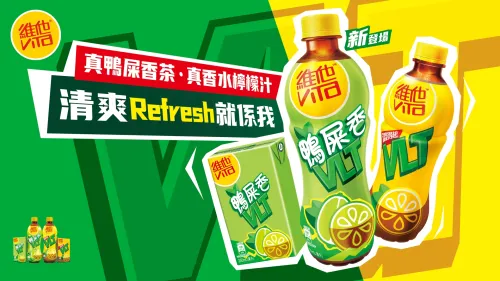Three secrets of success in the snack foods industry in Asia
In a globally growing category, Asia-Pacific comes in as the world’s fastest-growing snack foods market. Very notably over here in Asia, where multinational companies (MNCs) have always led the way, the trend is shifting towards home-grown snack foods companies. According to Kantar Worldpanel’s Asian Brand Power report,local brands in Asia attract 74% of shoppers’ fast-moving consumer goods (FMCG) spend and they are growing at twice the rate of multinational brands.
Being based in Bangkok at the very heart of the region’s consumer markets, Damien Morot, Vice President for Business Development of Consumer Goods at DKSH would like to share the three secrets of these home-grown snack foods manufacturers’ success and how they are keeping (MNC) brands on their toes.
1. Being local matters
The biggest success factor for Asian brands is being Asian. With their management and operations sited locally, they have their finger on the pulse of the constantly evolving consumer trends and are precisely aware of local consumers’ likes and dislikes.
Local brands in Asia attract 74% of shoppers’ fast-moving consumer goods (FMCG) spend and they are growing at twice the rate of multinational brands.
Over the years, MNCs have kept themselves ahead with their vast financial resources, sophisticated infrastructures and well-established delivery and operating practices. However, these advantages are quickly eroding as local players — who grew up with the consumers — are building professional operations themselves. Furthermore, they find themselves having a deeper understanding of the local culture and better appreciation for local flavours and tastes.
Asian brands have the competitive advantage of being able to offer products that combine the innovation of MNCs with the preferences of the local market. Which explains why in a Thai supermarket you can find chips in an array of interesting flavours such as seaweed, tom yam kung and sushi, and wafers in tiramisu, honey-date and strawberry jam.
2. Product first, branding second
In contrast with many international food manufacturers who place priorities and efforts on branding activities even before the product is launched, Asian players often focus on getting the product out to market first before turning to brand strategies. This is because in the snack foods category, Asian consumers care more about taste than brand.
Mintel’s research shows that millennials are more likely than any other generation to snack four times a day or, in many cases, more than that.
A very important marketing approach for Asian consumers is therefore to offer sample products and free trials at retail stores. This creates the first product experience at the point of purchase.
Furthermore, as price point remains the most important criteria in the South-east Asian snack foods category, local manufacturers focus on getting the product format right in terms of packaging sizes and pricing options. One of the trends for snack foods in Asia is to have smaller packets which also means cheaper prices, making it more attractive to a broader base of consumers.
3. Marketing and promotion
Aside from putting out products that offer value for money, many Asian food manufacturers are playing the “patriotism card” to boost support for homegrown labels. For example, Nielsen’s Go Glocal report points out that 54% of Malaysian consumers believe that local brands are more attuned to their personal needs and tastes and 55% are supportive of local businesses.
To counter this, MNC brands are starting to shift the focus of the marketing messages to their strong heritage in the market and how they have been part of the country and region’s growth over the years. Global brands are also increasingly turning to using local celebrities to endorse and promote their products in order to forge a closer rapport with the local market.
The future of the Asian snack foods market
Asia has the world’s youngest and fastest growing population. Combine that with more millennials joining the workforce (as research shows that they love their snacks) and increasing income, we are seeing an expanding demand for snack foods.
Millennials, also known as Generation Y or those born between 1980 and the early 2000s, want their food to be easily accessible and simple to consume. Mintel’s research shows that millennials are more likely than any other generation to snack four times a day or, in many cases, more than that. Snack foods and millennials is indeed a match made in heaven.



















 Advertise
Advertise







